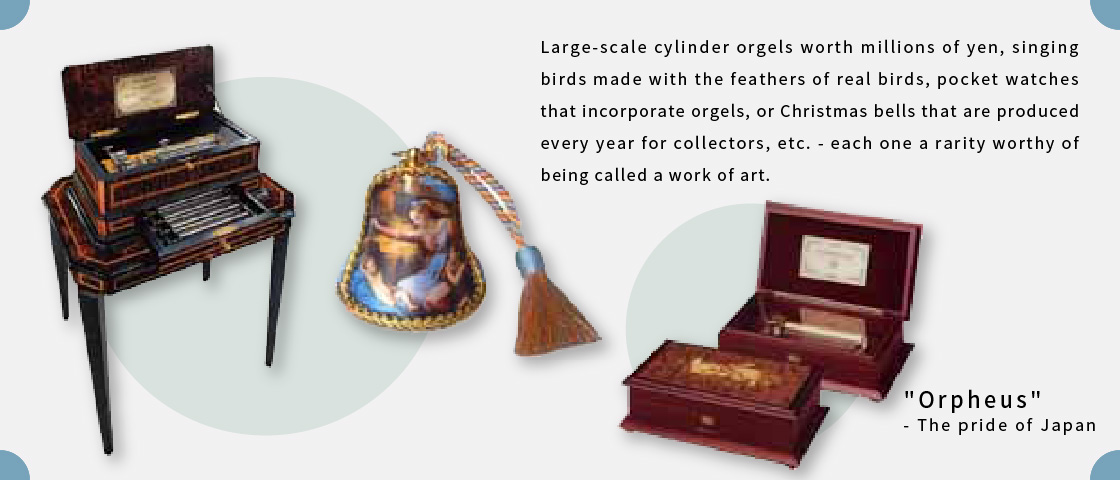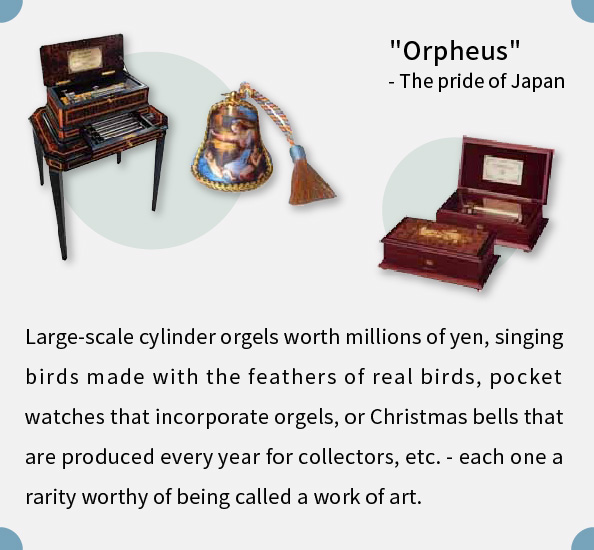

In Europe in the Middle Ages, the sound of bells (carillon) in church towers acted as a substitute for people's clocks. In the 16th century when the spring was invented, clocks became personal possessions. Orgel music boxes came about as a result of clockmakers' attempts to incorporate the sound of bells in clocks in the form of a time signal.
By the 18th century, orgels were separated from clocks, and had the status of being the period's only apparatus for recording and replaying music. The centre of these activities was Switzerland. By the 19th century, orgels had become even more elaborate.
However, because of the exorbitant prices, they became popular among the aristocracy and the wealthy classes, but were far beyond reach of the general public. Cylinder-type orgels, in which pins set into a cylinder pluck at comb-like rows of metal to make sounds, were popular.
~The only manufacturer to continue adopting the techniques of those days.~
The Reuge company was established in 1886 in the small town of Sainte-Croix in the Swiss Alps, by Albert Reuge, the son of a clockmaker, in what was the heyday of the late 19th century, in which orgels made up 10% of Switzerland's gross export sales.
Reuge is the only manufacturer to continually use the techniques of the time, to the present day. All the processes, from the metal processing techniques to the marquetry acoustic techniques, are carried out one-by-one by the hands of skilled craftsmen. Kaimeiro stocks a wide range of Reuge products, please drop in and take a look.
In the latter half of the 19th century, the expensive cylinder-type orgel music boxes, which could not be mass produced, were changed, and the disk-type orgel was born. As well as being able to mass-produce disks with a press, the changing of the disks also enabled various tunes to be played on one orgel.
As a result, large, loud orgels began to appear in bars and at stations, where people gathered, and smaller versions also made it possible for orgels to become commonplace in the homes of the general public, for domestic use.
The spread of the disk made the orgel even more popular, but it's popularity soon declined and was on the brink of extinction as a result of the invention of Edison's gramophone. At the beginning of the 20th century, record companies sold large quantities of records, instantly popularising the gramophone. As a result, many orgel makers in Europe and the United States disappeared, and it was thought that the techniques would too.
However, during World WarⅡ, the gentle tones became more and more popular among American soldiers stationed in Europe, and orgel production was revived.
Currently, in addition to Reuge, the Japanese company Sankyo also make high-quality orgels with beautiful tones, in their "Orpheus" brand series.


